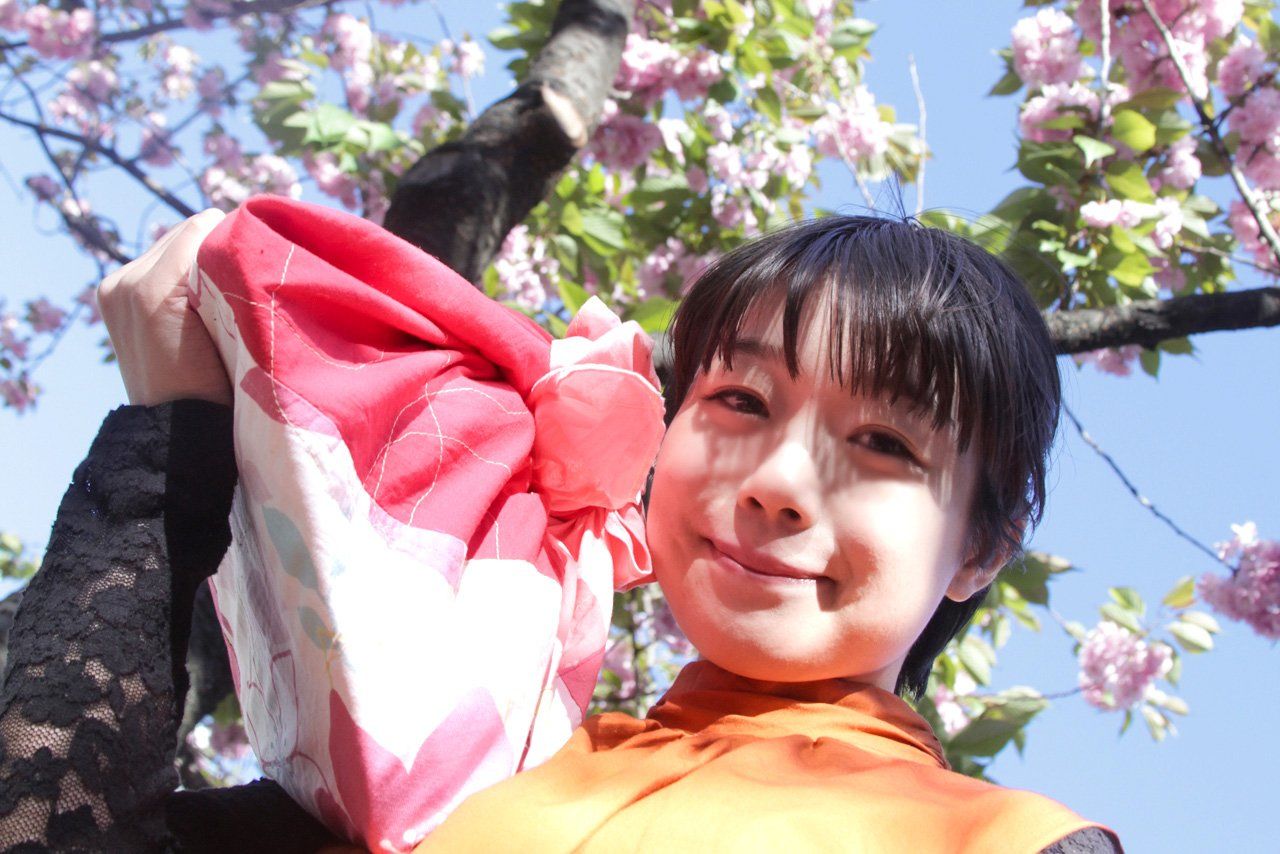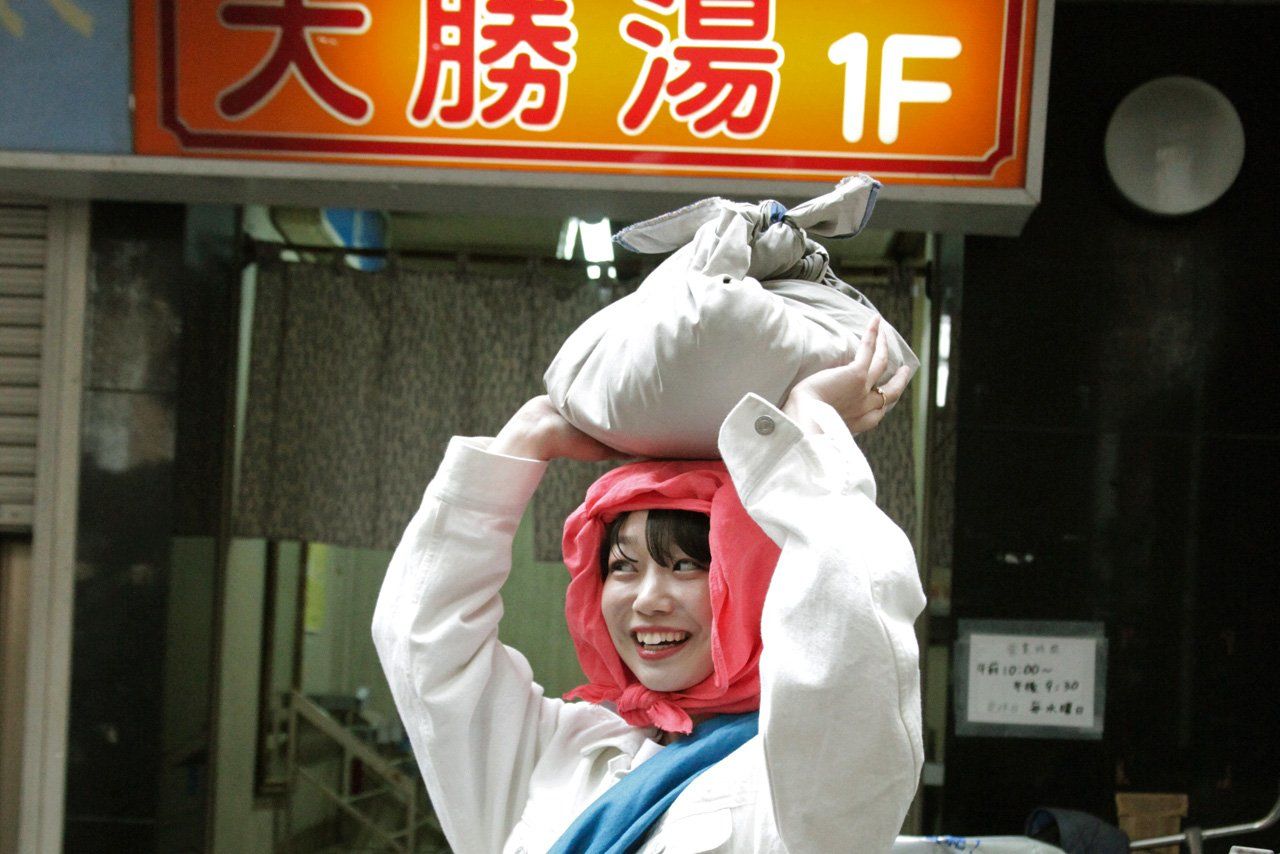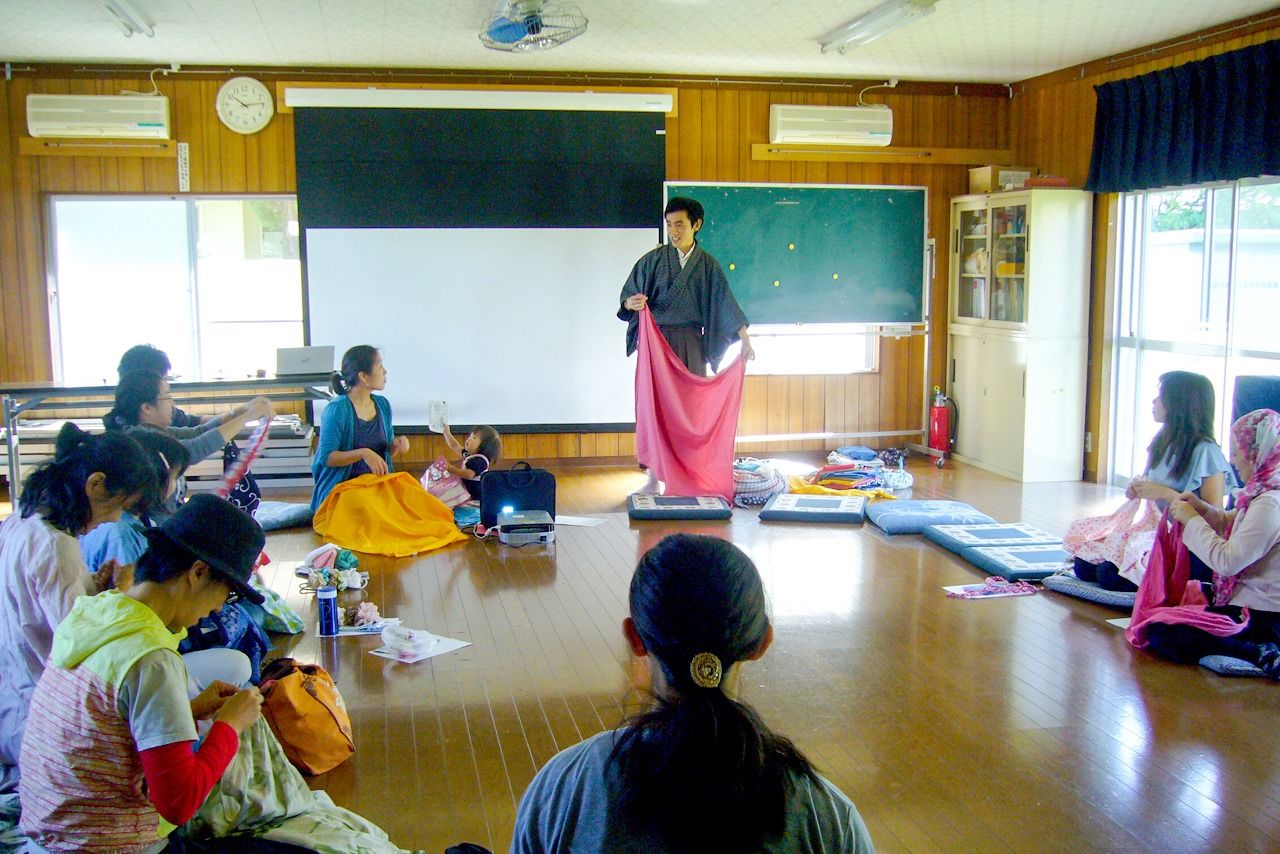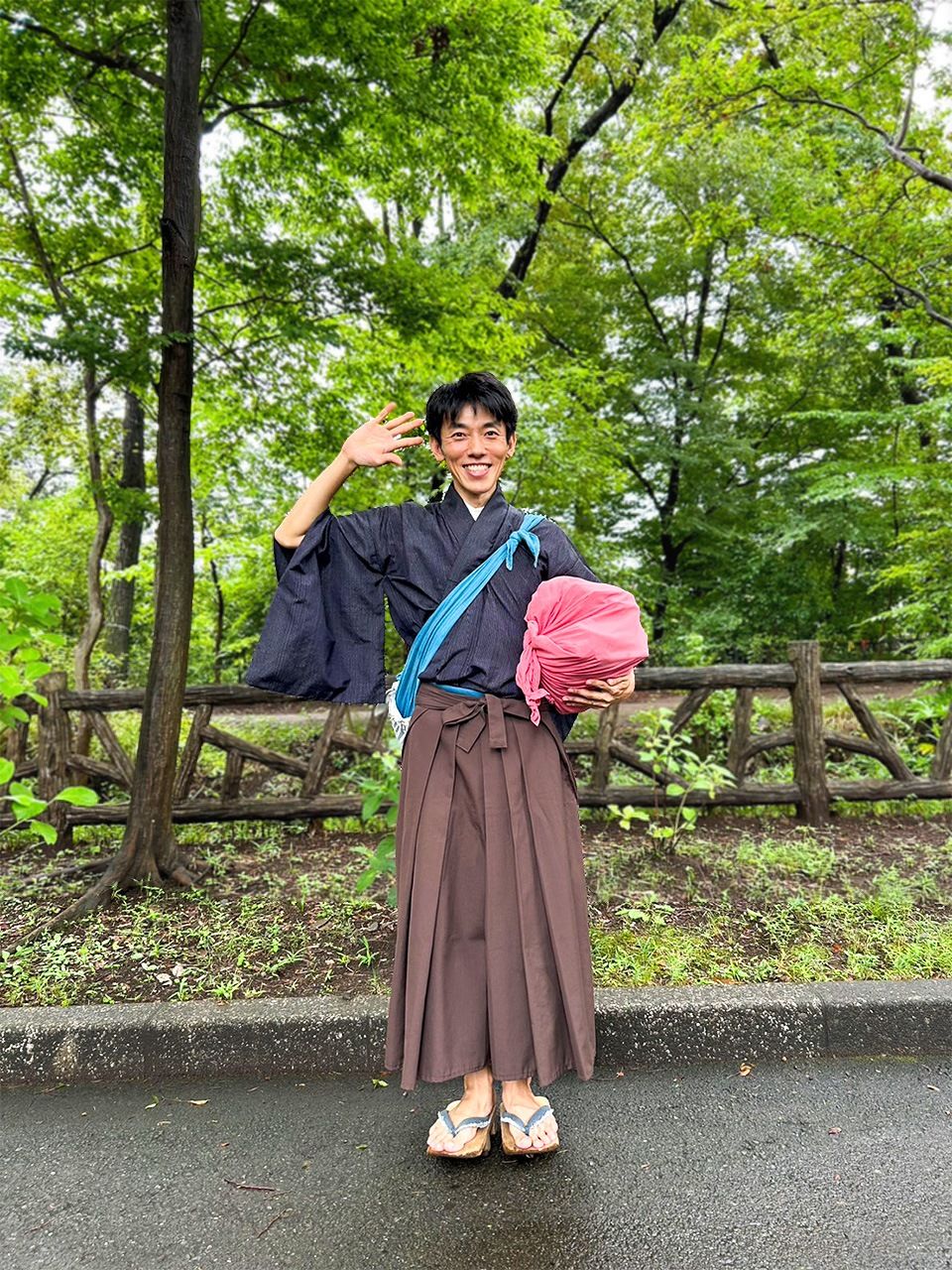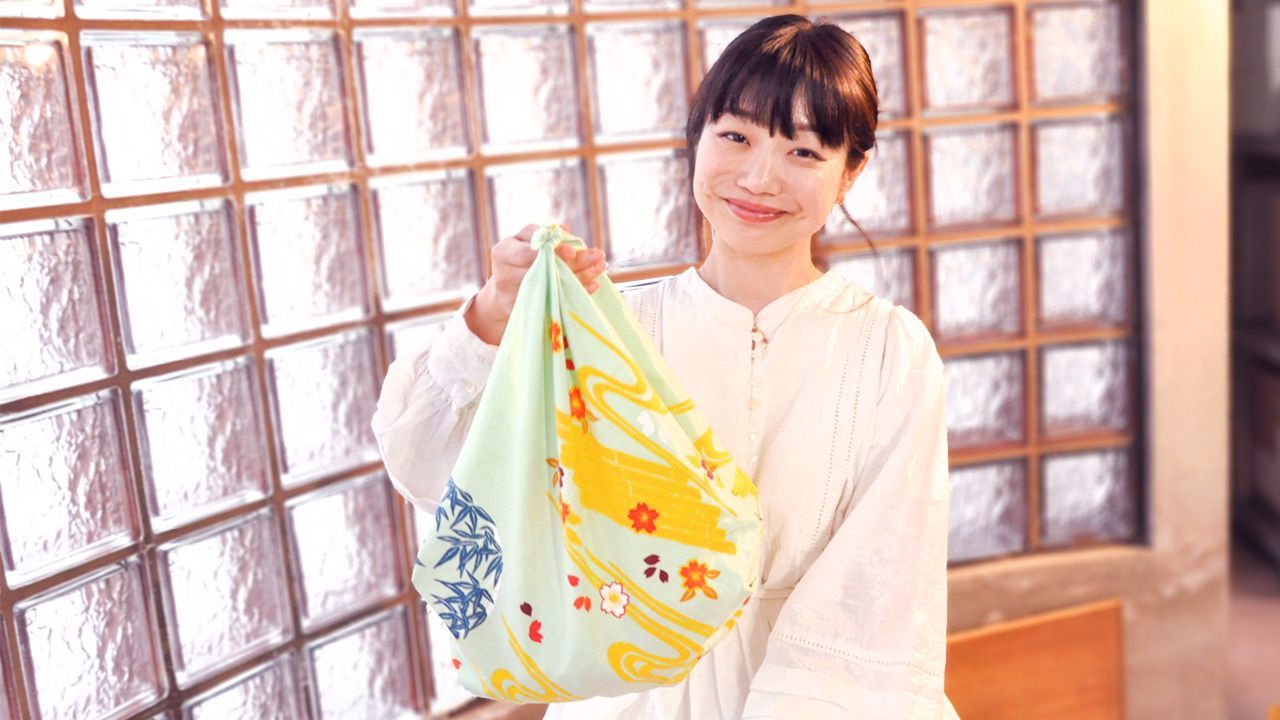
The Furoshiki: A Versatile Treasure
Culture Lifestyle- English
- 日本語
- 简体字
- 繁體字
- Français
- Español
- العربية
- Русский
Spotlight on Furoshiki
Everything nowadays—people and things alike—is labeled according to its meaning or role. Japan’s furoshiki wrapping cloth, despite its infinite possibilities, was caricatured in old television dramas or manga as the object of choice used by robbers or renters absconding in the night. That memory is imprinted on us: it’s like origami, where the only thing you can recall is how to fold a crane. There were calls to restore the good name of furoshiki when mottainai (what a waste!) waste-reduction campaigns were in vogue, but from my perspective, the preconceptions attached to furoshiki are really unfortunate—that’s truly mottainai. But let’s leave those stereotypes behind and go on a furoshiki journey.
Infinite Possibilities
Products sold as “furoshiki” are not the only ones that can be used as such. Any piece of fabric that is more or less square and whose ends can be knotted, be it a handkerchief, a bandanna, or a scarf, can be a furoshiki.
Try wrapping objects with your favorite fabrics. There are no hard-and-fast rules about knots either. Left to themselves, your hands will likely be able to produce something. It’s more the color and pattern of your fabric, rather than the knots you form, that will make an impression. Even something as plain as a bentō box wrapper can be dressed up with a pretty piece of cloth. Texture is also important to make your furoshiki pleasant to use, so any fabric that looks and feels attractive and makes you happy is fine.
As long as your furoshiki is nicely knotted and you carry yourself with confidence, any kind will make the grade. A furoshiki is a reflection of you as a person.
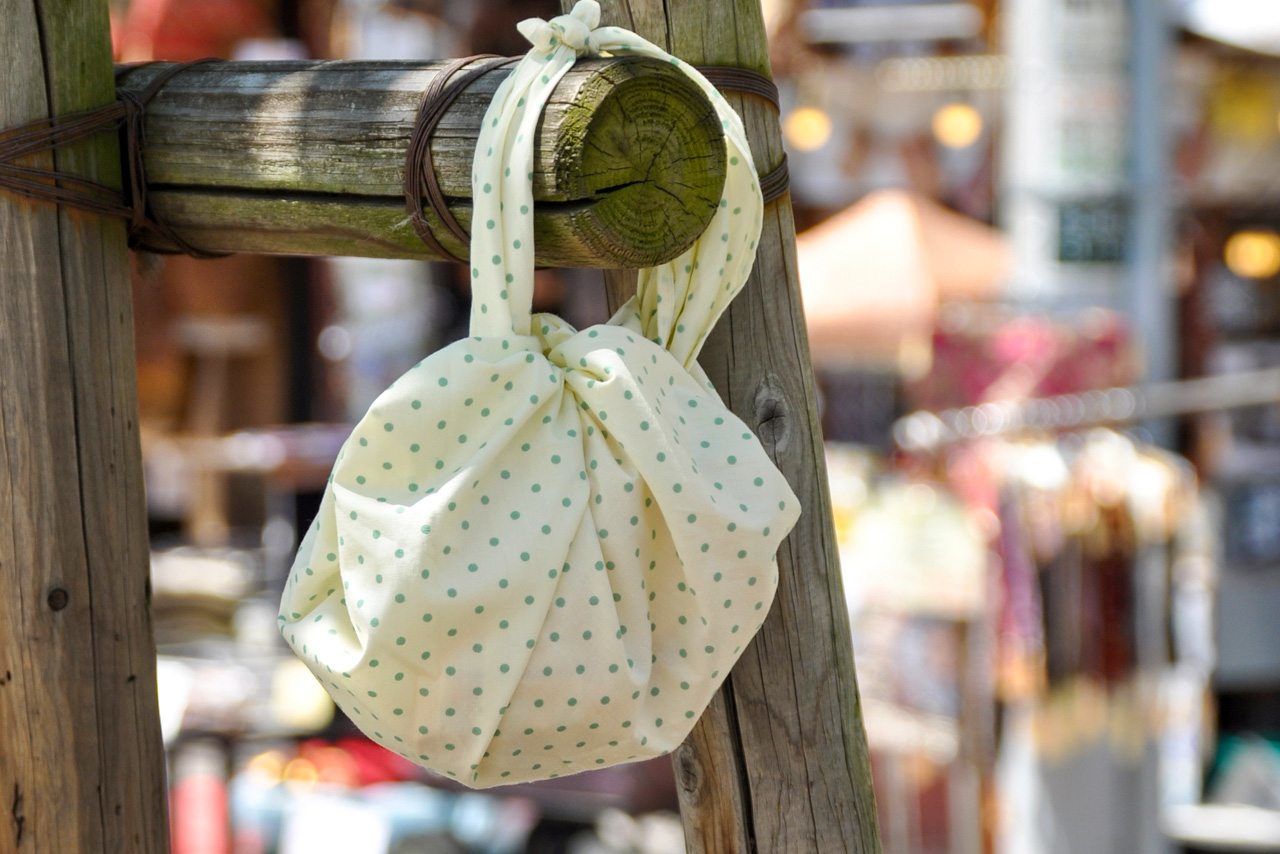
A drawstring-style bag that can open and close. (© Yokoyama Isao)
Furoshiki were originally made by joining together cuts of tanmono, bolts of fabric roughly 35 centimeters wide used for making kimono, so sizes came in multiples of 35. A futahaba double-width furoshiki was 70 centimeters across, and a large mihaba triple-width furoshiki was 105 centimeters across. A furoshiki need not be perfectly square; one that is slightly longer on the vertical, which does not have as much give, will be easier to tie.
Nowadays, furoshiki are not made from tanmono. They come in all sizes, large ones measuring 100 centimeters square, medium 70 centimeters, and small 50 centimeters. If you’ll be doing a lot of shopping or intend to use a furoshiki as a wrap-around garment, I recommend the large size. The medium size is convenient for casual outings, and small ones are perfect as catchalls inside a larger bag.
Furoshiki come in a myriad of colors, patterns, weaves, dyes, and prints. Some even sport embroidery or patchwork. They are commonly available in fabrics like cotton, linen, hemp, silk, polyester, and rayon. For daily use, washable fabrics like cotton or linen are best.

A shopping bag made using stitched-together remnants of vintage Kurume ikat. (© Yokoyama Isao)
Flexibility-Plus
Say you have a bag or briefcase; any object larger than its capacity will not fit inside. Or you may be carrying a lone bentō box in a large bag, in which case it will slip and slide around inside. Meanwhile, a furoshiki is size-adjustable, so it suits everyone and every use. If the furoshiki isn’t large enough, simply knotting another to it will increase its carrying capacity.
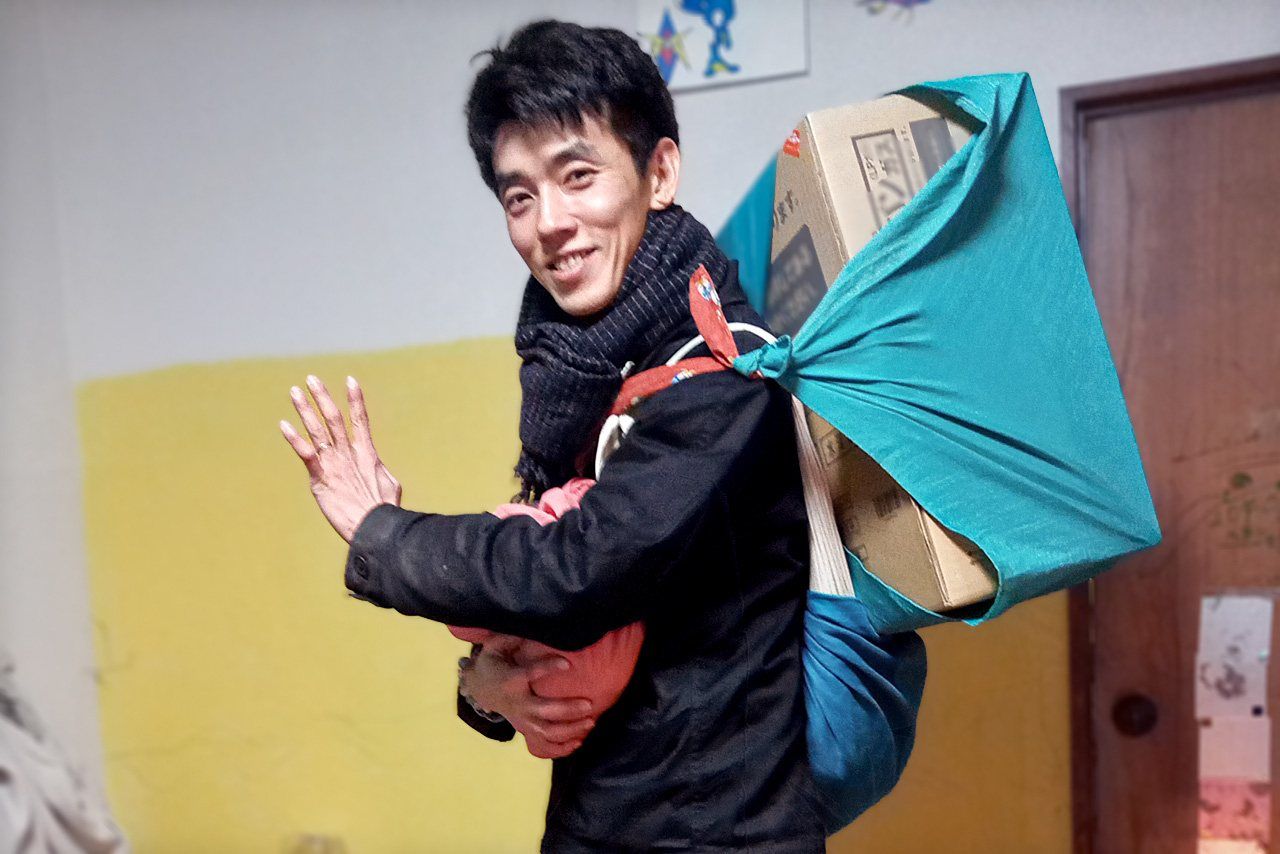
Knotting a large and a small furoshiki together to create a back-carrier. (© Yokoyama Isao)
A furoshiki will essentially adjust to fit. It’s flexible and can easily be returned to its flat state by unknotting it. It can be arranged every which way, depending on the type or the number of objects wrapped, and changed back into a flat piece of cloth in the blink of an eye.
The Original Eco-Bag?
Recent interest has focused on using furoshiki as eco-bags, although this is only one of their many possibilities. There are multiple ways to knot a furoshiki so that it becomes a shopping bag, the most basic of which is to tie adjacent corners of the cloth to each other. A granny knot will soon come loose, though, so make sure the cloth is securely knotted. If you have a large or heavy load, make two carrying handles; for a lighter load, one is enough.
I’m not saying that a furoshiki is superior to a store-bought eco-bag. They can even be used together with a small furoshiki enhancing the eco-bag’s functions by lengthening the handles, reinforcing it, or adding color.
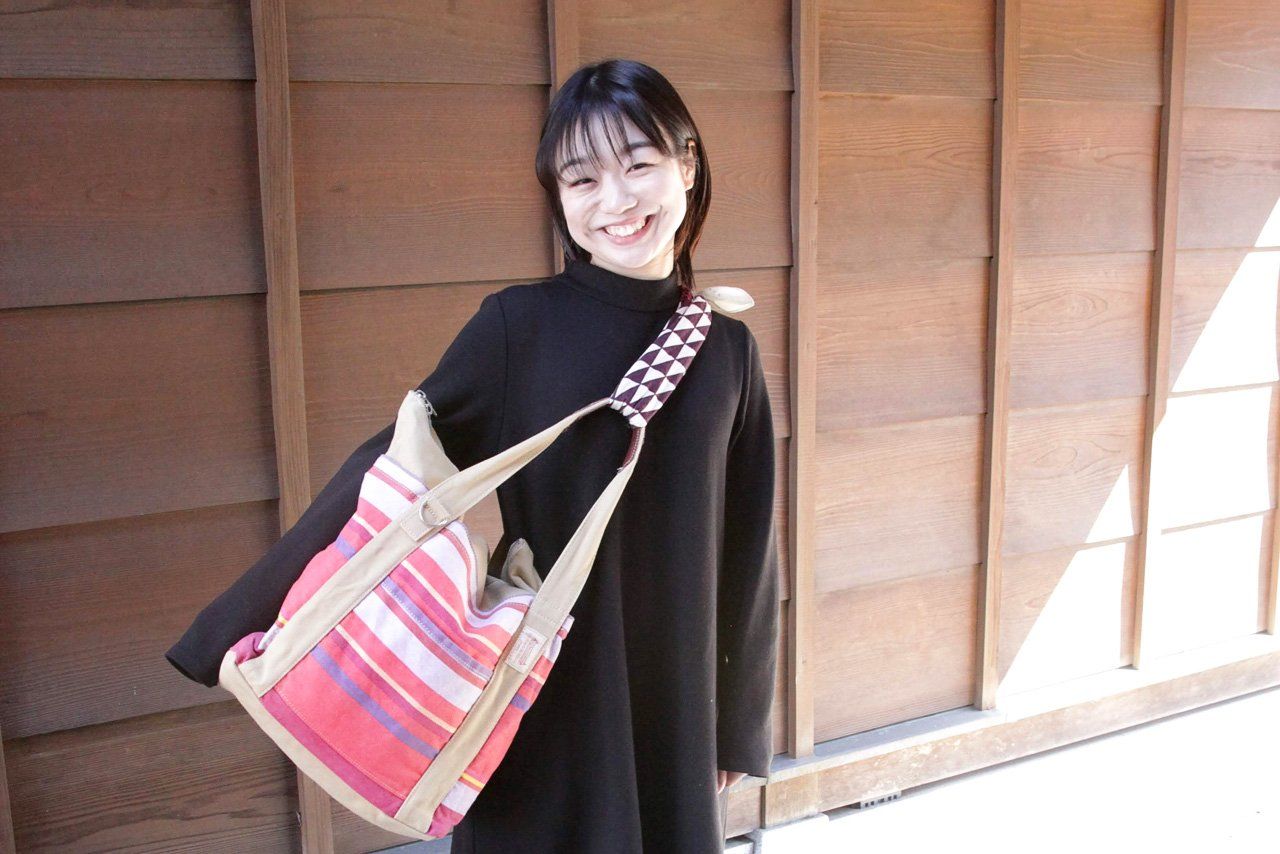
A small, folded furoshiki can be used to create a cross-body bag. (© Yokoyama Isao)
Shape-Shifter
Furoshiki have roughly four functions, with the potential to wrap, to use as a bag, to sling on the shoulder or back, and to wear as a garment. Items wrapped in a furoshiki are secure and do not shift. The furoshiki as a bag can be opened and closed. Lengthening a furoshiki used for wrapping or as a bag allows it to be carried on the shoulder or the back. As for wearing, a furoshiki can serve as a hat, jacket, or wraparound skirt. And the furoshiki that was an eco-bag a moment ago can be unknotted and worn to ward off the cold.
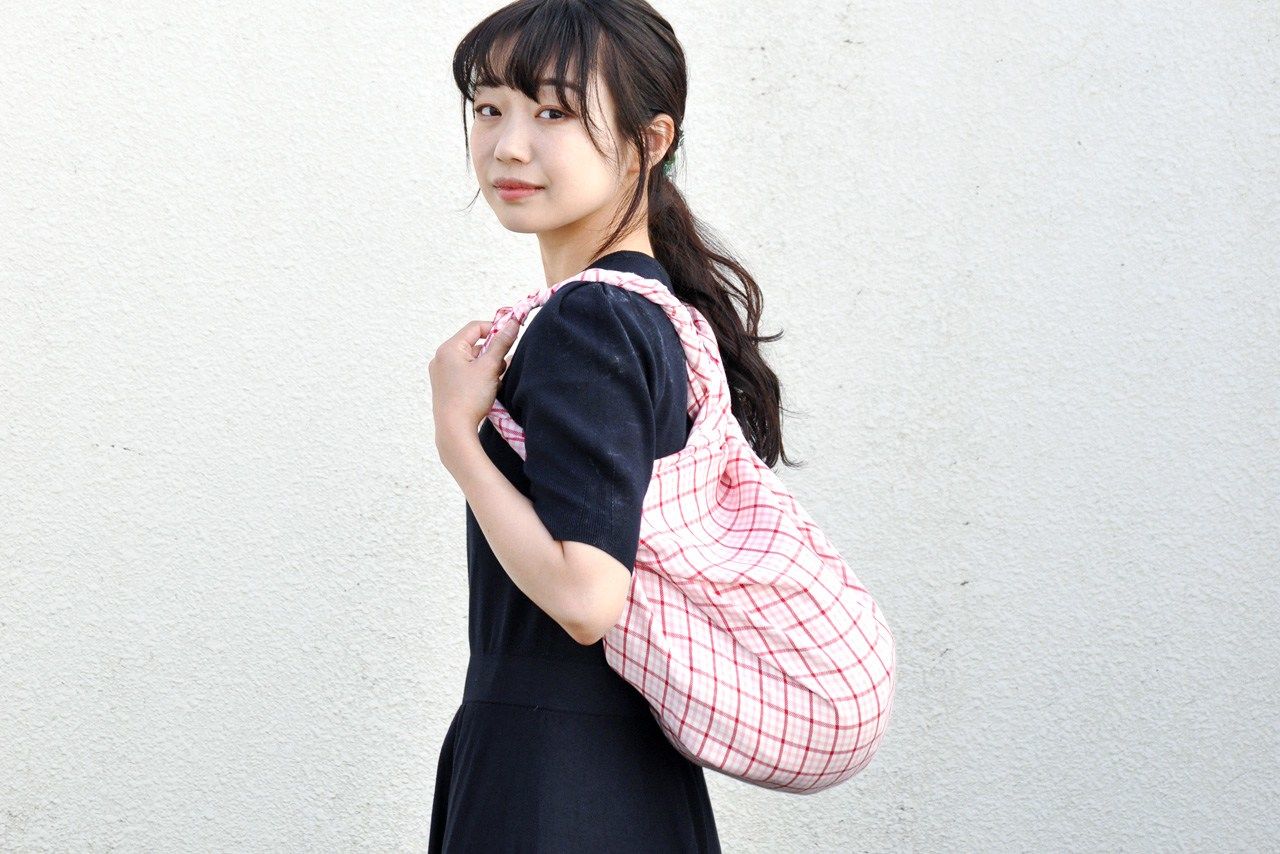
A large furoshiki can be turned into a knapsack, without sewing, cutting, or using pins. (© Yokoyama Isao)
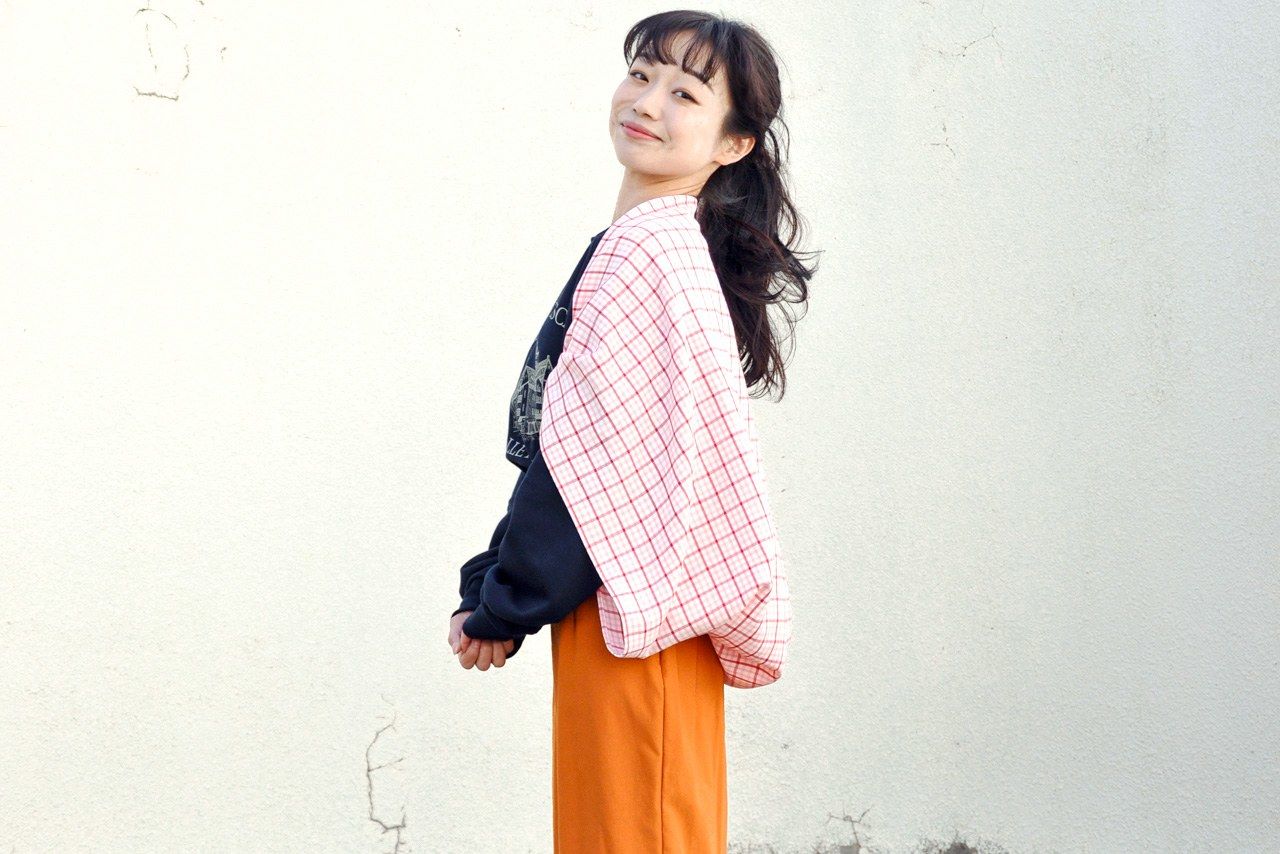
A loose jacket made from a furoshiki will stay on even on windy days. (© Yokoyama Isao)
Tekkō hand-coverings, meanwhile, keep hands warm in winter and protect from the sun in summer. Children pretending to be ninja love them too, and after play is done, the cloth reverts to being a furoshiki, so there’s no waste.
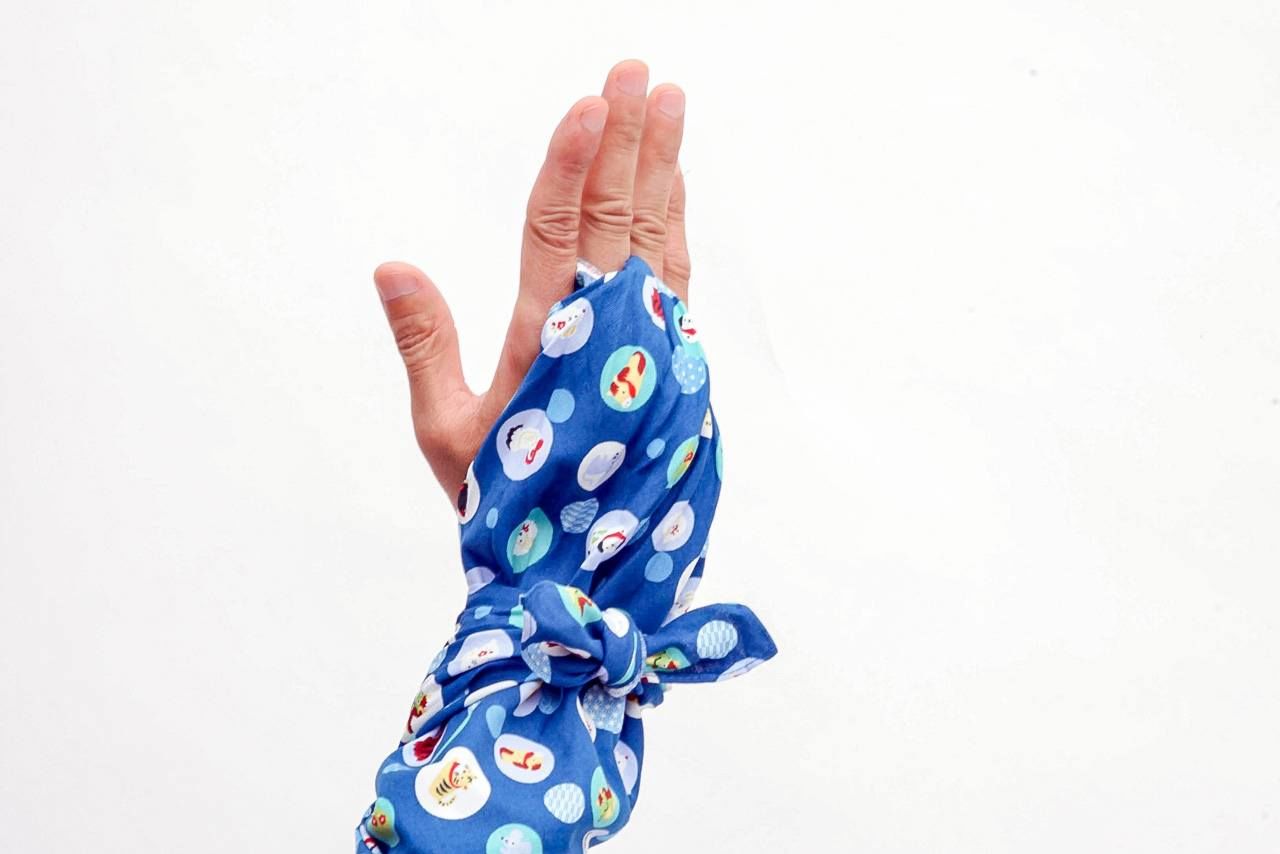
Ninja-style tekkō hand and wrist cover. (© Yokoyama Isao)
Folding along the bias gives the furoshiki some stretch, so it can be used as a rope. Folded that way, it can also double as a sash for a yukata; it will not loosen easily, and it can serve as a handy “pocket” into which to insert a folded handkerchief.

A furoshiki can be used as a sash or belt for a yukata. (© Yokoyama Isao)
No Need to Overthink
Cutting cloth into specific shapes narrows its possibilities. The single square cloth that is a furoshiki can be magically transformed. There are many ways of knotting the cloth, but it isn’t necessary to remember them all. The basic method for wrapping a bentō box is universal and endlessly adaptable. Making small knots at the corners stretches the cloth and can turn into handles. Alternatively, the cloth can be twisted, or the loose corners can be knotted together. It all looks complicated, but the product is the result of simple combinations. If you get used to knotting a furoshiki into a bag when you are shopping, your fingers will soon learn what to do.
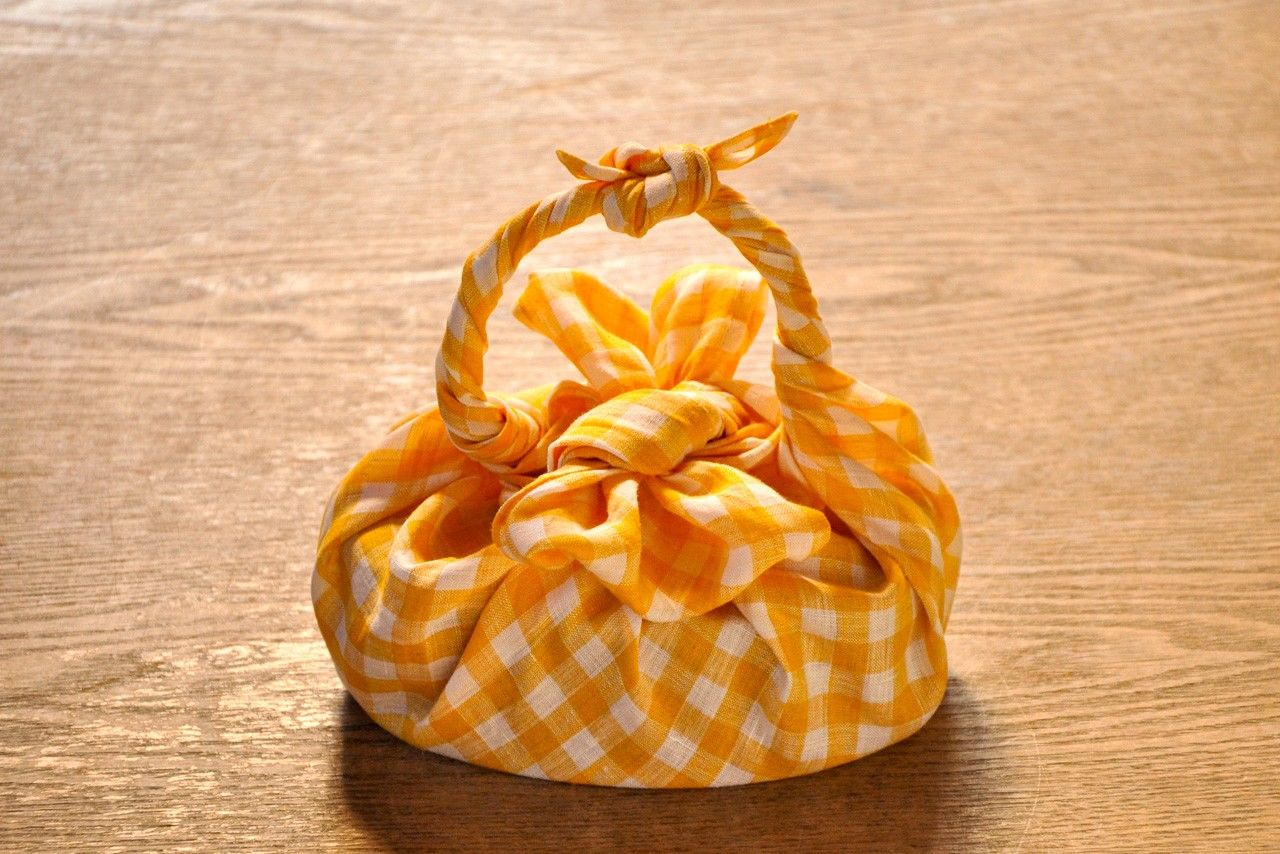
A fancy bentō box wrap, with the knot tied to emulate a ribbon. (© Yokoyama Isao)
The Furoshiki as A Hug
Furoshiki, simple and easy to use, can sometimes be dismissed as simply makeshift. But knotting, in which two ends of cloth tug in opposite directions, is stronger than an adhesive and creates a kind of pressure-bonding. A furoshiki is not only for wrapping or tying. It hugs the items it holds, cradling them gently yet strongly.
Think of wrapping your arms around your body to give yourself a hug. A furoshiki is a bit like that. Its utility varies depending on how tightly it’s knotted, held, hoisted onto the back, or carried. A furoshiki is not an object in a vacuum. It’s always in combination with the user.
If you don’t know how to tie a particular knot, try using your hands for the purpose you need and then apply that to your furoshiki. Of course, there’s no need to use a furoshiki if you feel you can get by without one. Nor should you feel you have to carry a huge load by yourself; if your friends are available, get them to help. A furoshiki should be there to help get you out of a jam.
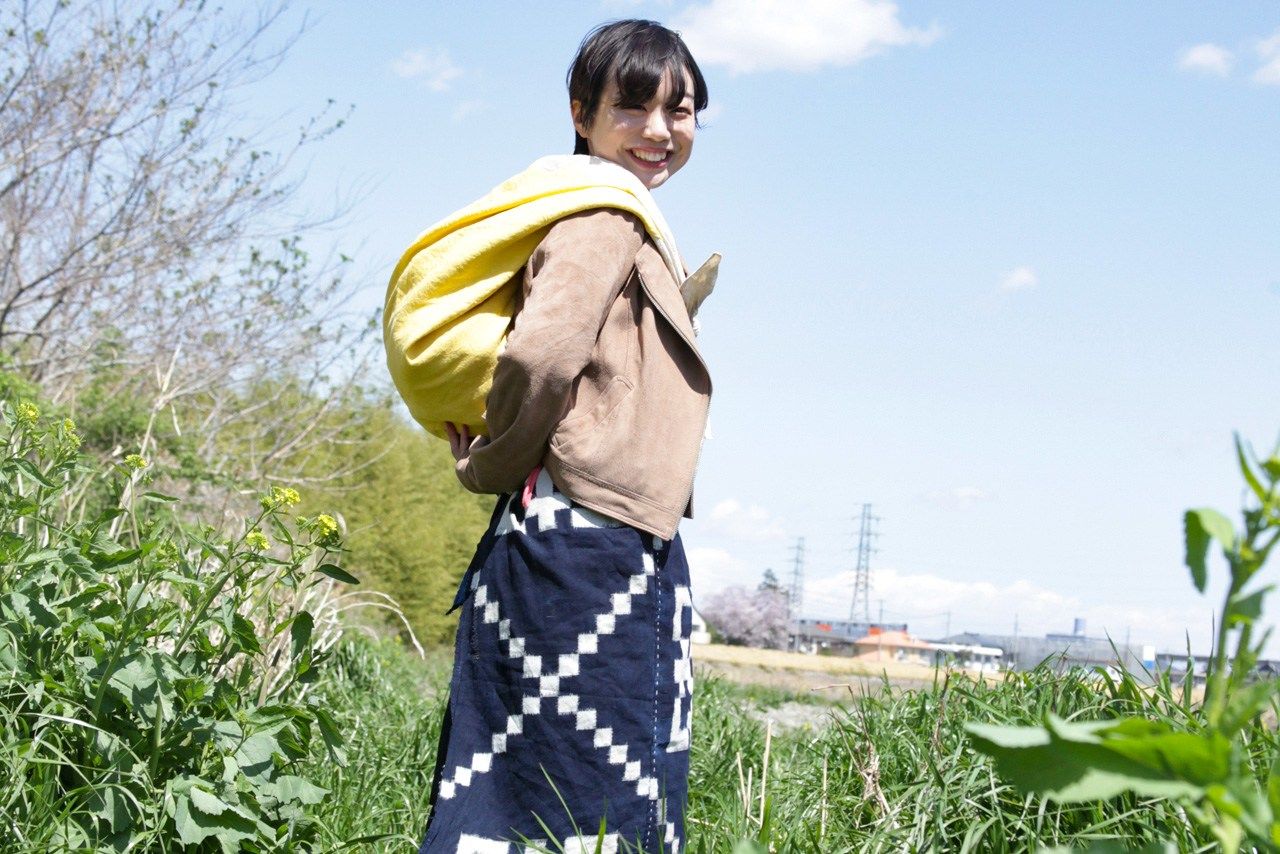
On the way with a furoshiki backpack. The skirt in the photo is also a furoshiki. (© Yokoyama Isao)
Fostering Connection
There are various theories as to the origins of the word furoshiki, and interpretations vary as well. Some say that it was used as a cloth on which to sit while enjoying a steam bath; furo means “bath” and shiki is a form of shiku, meaning to “lay out.” In the Edo period (1603–1868), the furoshiki referred to a cloth for carrying one’s belongings when going to the public bath; that may be the most plausible explanation. Outside the bath, furoshiki could also be used when traveling or doing errands, or by itinerant peddlers to carry their wares. But in the Edo period, ordinary folks basically didn’t carry anything with them. Daily life activities took place in the neighborhood, and if they did acquire something along the way, they usually placed it in their kimono’s deep sleeve or tucked it in their obi or under their tenugui headcloth. But when going to the bath, they needed a change of clothes, hence the furoshiki to carry them in.
Many people today commute to work or otherwise travel long distances. Surrounded by strangers, it feels like going away on a journey. A furoshiki folded and stashed away in a bag gives peace of mind, as it can be useful in unexpected circumstances. If you accumulate belongings along the way, it can turn into a bag or be used for carrying something heavy on your back. It is also useful against rain or cold, and can even be used as head or face protection if necessary.
Everywhere we look today, stores overflow with all kinds of goods, many of them intended for a single purpose only. A furoshiki’s all-round utility can help eliminate useless gadgets and simplify life.
The very usefulness of the furoshiki facilitates independence, but ideally, people should join hands to create community. If someone is carrying a heavy load, offer to help. If someone looks cold, a furoshiki to throw around them will keep them warm. Furoshiki are not simply about practicality; they can also be used to help others. The ability of furoshiki to foster connection and friendship is a treasure for everyone.
(Originally published in Japanese on January 31, 2024. Model: “Furoshiki girl” Takino Asami. Banner photo © Yokoyama Isao.)
